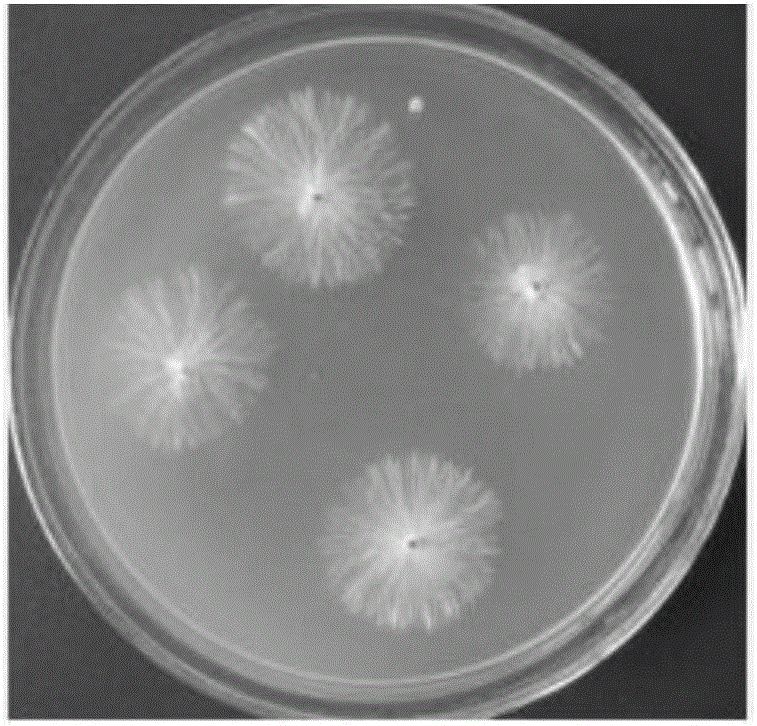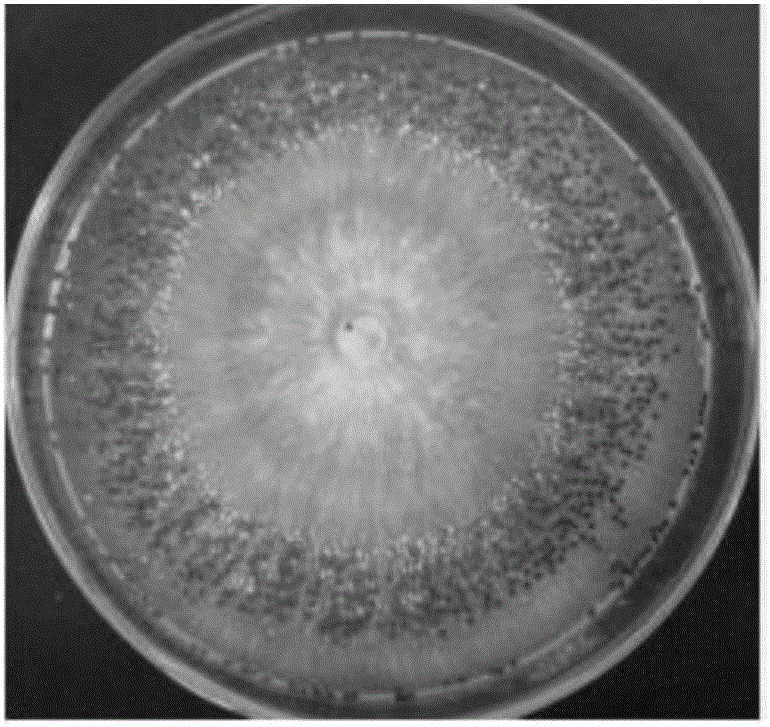Method for fast separating, identifying and storing sweet potato sclerotium rolfsii
A technology for leprosy and sweet potato, which is applied in the field of separation, identification and preservation of microorganisms, can solve the problems of large workload of bacterial species preservation, pathogenicity of bacterial species contamination, disordered bacterial species, etc., and achieves small workload and easy management. , reduce the effect of processing
- Summary
- Abstract
- Description
- Claims
- Application Information
AI Technical Summary
Problems solved by technology
Method used
Image
Examples
Embodiment 1
[0049] In March 2011, a typical sample of sweet potato white silk disease was collected from the sweet potato nursery field of Baiyun Base, Guangdong Academy of Agricultural Sciences. The yam and potato pieces are covered with white hyphae and white to brown sclerotia; prepare a PDA medium plate according to the conventional method, cool to 60°C and add streptomycin at 1 / 1000 quality of the PDA medium.
[0050] In the ultra-clean bench, use a sterilized inoculation needle to pick up the mycelia or use a sterilized tweezers to pick up the sclerotia on the PDA medium plate, and place it in a light incubator at 25°C for cultivation. After 2 days, the sclerotia grows white mycelia. like figure 1 As shown, the picked mycelium grows a large amount of new mycelium after two days of cultivation, and picks the medium block with mycelium with an inoculation needle at the edge of the white mycelium, and puts it on a new PDA medium plate. Purification culture was performed, and it was ob...
Embodiment 2
[0053] In December 2011, a typical sweet potato mildew disease sample was collected from the sweet potato quality comparison test field of Baiyun Base, Guangdong Academy of Agricultural Sciences. The harvested sweet potato pieces were covered with white hyphae and white to brown sclerotia; according to conventional methods Prepare a PDA medium plate, add 1 / 1000 streptomycin while cooling to 50°C.
[0054] In the ultra-clean bench, use a sterilized inoculation needle to pick up the hyphae or use a sterilized tweezers to pick up the sclerotia on the PDA medium plate, and place it in a light incubator at 25°C for cultivation. After 3 days, the sclerotia grows white mycelia. On the edge of the white mycelium, use an inoculation needle to pick up the medium block with mycelium, put it on a new PDA medium plate, and purify it. It is observed that 15 bacterial strains can produce rapeseed sclerotia.
[0055] After the purified 15 strains were cultured at 25°C for 3 days, a mycelial b...
Embodiment 3
[0058] Inoculate the 15 pathogenic bacterial strains confirmed in Example 1 onto a new PDA medium plate, and place them at 25°C for 10 days to grow mature tan sclerotia on the plate, such as figure 2 Then, under the condition of ultra-clean bench, use tweezers to pick the tan sclerotium and put it into a sterile preservation tube; twist the preservation tube with sclerotia to a semi-tight state, and place it in a silica gel desiccator to dry After 3 days, tighten the cap of the preservation tube and store it directly at -20°C until August 2011. In October 2015, the strain storage tube stored at -20°C was taken out, and under sterile conditions, the sclerotium was picked up with sterilized forceps and placed on a PDA medium plate, and new colonies could grow within 2 days.
PUM
| Property | Measurement | Unit |
|---|---|---|
| diameter | aaaaa | aaaaa |
| length | aaaaa | aaaaa |
| diameter | aaaaa | aaaaa |
Abstract
Description
Claims
Application Information
 Login to View More
Login to View More - R&D
- Intellectual Property
- Life Sciences
- Materials
- Tech Scout
- Unparalleled Data Quality
- Higher Quality Content
- 60% Fewer Hallucinations
Browse by: Latest US Patents, China's latest patents, Technical Efficacy Thesaurus, Application Domain, Technology Topic, Popular Technical Reports.
© 2025 PatSnap. All rights reserved.Legal|Privacy policy|Modern Slavery Act Transparency Statement|Sitemap|About US| Contact US: help@patsnap.com


